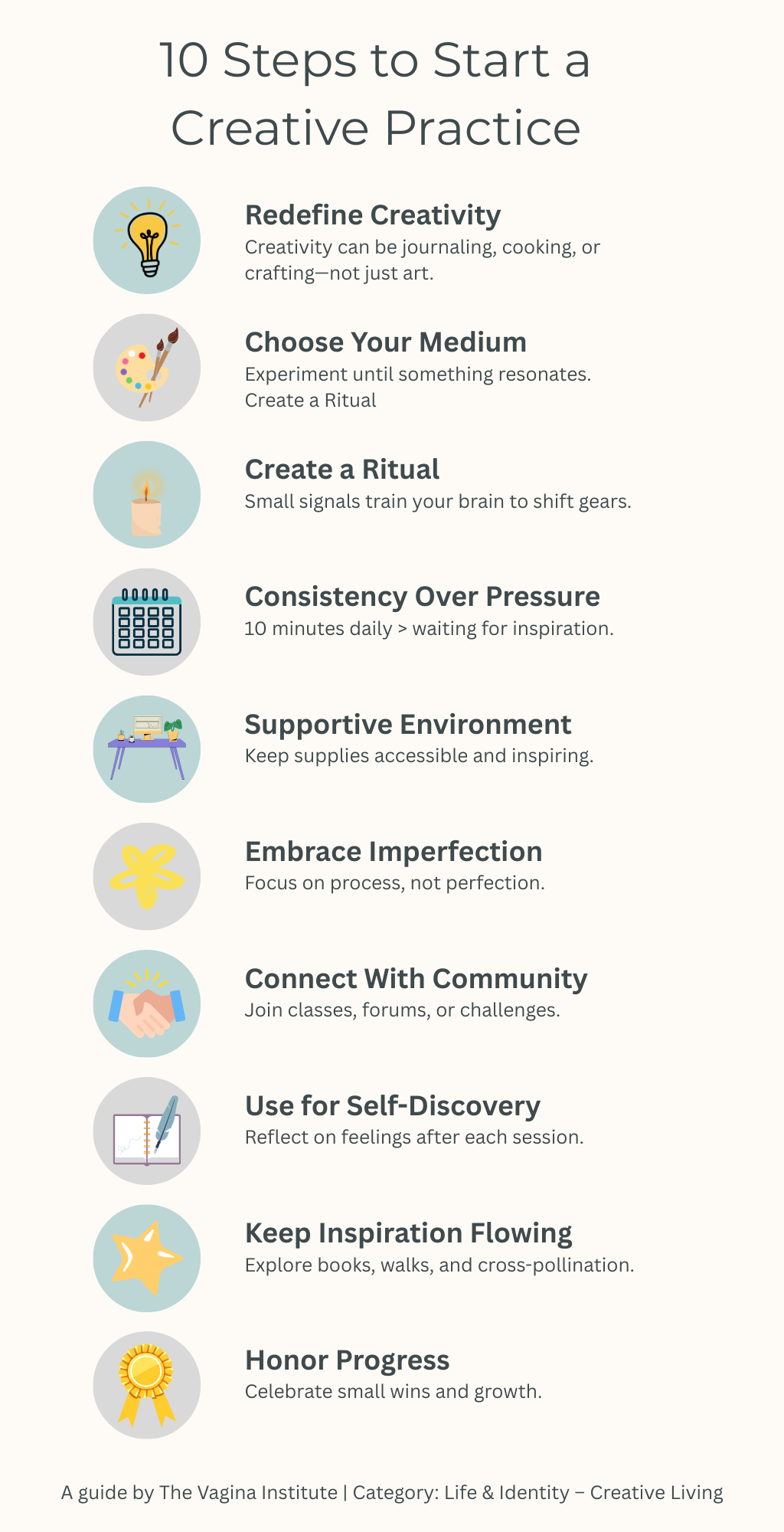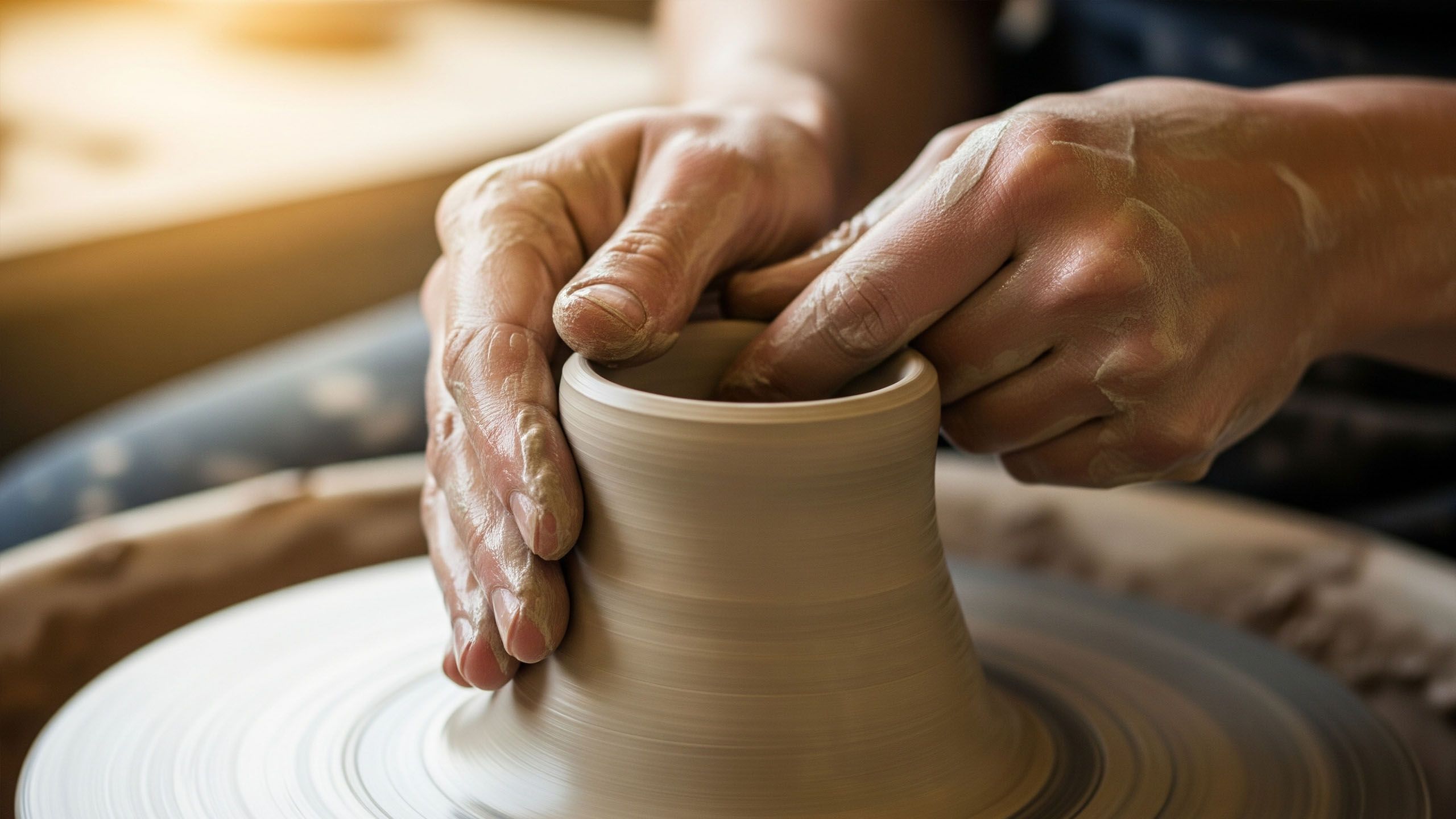How to Start a Creative Practice From Scratch

Creativity is often imagined as a spark of genius—something you either have or you don’t. In reality, creativity is less about talent and more about practice. Like building muscle, cultivating a creative life requires intention, consistency, and a willingness to explore. Whether you want to paint, write, dance, craft, or simply bring more imagination into your everyday routine, starting a creative practice from scratch is entirely possible.
This guide will walk you through the steps of creating a sustainable, nourishing practice that can grow with you.
Why Creativity Matters in Personal Journeys
Creative expression is more than producing art—it’s a way of connecting with yourself, processing emotions, and reclaiming joy. Studies show that engaging in creative practices lowers stress, strengthens problem-solving skills, and enhances overall wellbeing. For many, creativity also becomes a powerful form of self-discovery and identity-building, especially when navigating transitions, challenges, or personal growth.
Step 1: Redefine What Creativity Means
Many people never start because they think creativity must look a certain way—painting perfect portraits, writing novels, or producing gallery-worthy work. In truth, creativity can be as simple as:
-
Journaling thoughts and doodles
-
Rearranging your living space
-
Cooking with new flavors
-
Sewing, knitting, or crafting
-
Storytelling or spoken word
-
Exploring photography or digital art
Tip: Give yourself permission to play. Creativity is not about perfection—it’s about curiosity.
Step 2: Choose Your Medium (or Let It Choose You)
When starting from scratch, it helps to experiment with multiple mediums until something resonates. Ask yourself:
-
What have I always been drawn to?
-
Which activities make me lose track of time?
-
Do I prefer working with my hands, words, images, or movement?
You don’t have to settle right away. Many creative practices evolve through trial and error. Start small—one sketchbook, one cheap set of paints, one notebook.
Step 3: Create a Ritual Around Your Practice
Habits stick when they are tied to rituals. A ritual signals to your brain that it’s time to enter a creative mindset. Some examples:
-
Lighting a candle or incense before journaling
-
Playing a specific playlist while painting
-
Doing a 5-minute stretch before dancing
-
Brewing tea before writing
Your ritual doesn’t have to be elaborate—it just needs to help you shift gears and show up.
Step 4: Build Consistency, Not Pressure
The most common barrier to creativity is the pressure to produce something “good.” Instead, focus on consistency.
-
Start with 10–15 minutes a day or 2–3 times a week
-
Use timers to keep it manageable
-
Treat it like brushing your teeth—small, regular effort adds up
Pro tip: Keep a “creative log.” Write down when you practiced, what you did, and how it felt. Over time, you’ll see patterns and progress.
| Personal Value or Family Goal | Potential Career Conflict |
|---|
| Practice Style | Frequency | Time Commitment | Best For |
|---|---|---|---|
| Daily Micro-Sessions | 10–15 minutes a day | Short but regular | Building habit quickly |
| Weekly Deep Dives | 2–3 times per week | 1–2 hours per session | Exploring projects in depth |
| Hybrid Routine | Daily micro + weekly deep | Flexible | Balancing habit + exploration |
Step 5: Create a Supportive Environment
Your surroundings shape your energy. You don’t need a full studio to nurture creativity, but small adjustments make a difference:
-
Dedicate a box, shelf, or corner for your materials
-
Keep supplies visible and accessible
-
Remove distractions during practice time
-
Use inspiring visuals (photos, quotes, art) in your space
Step 6: Embrace Imperfection
A blank page can feel intimidating. The key is to let go of outcome and focus on process. Try these approaches:
-
Morning pages: Free-write 2–3 pages without stopping
-
Timed sketches: Draw something in 5 minutes, no erasing
-
First draft rule: Remind yourself the first attempt is meant to be messy
Creativity thrives when failure is reframed as exploration.
Step 7: Connect With Community
Sharing your practice with others can be motivating and inspiring. You don’t need to post everything publicly—sometimes a trusted friend or a small online group is enough.
Ways to connect:
-
Local workshops or classes
-
Online forums and creative challenges
-
Accountability partners
-
Social media groups for beginners
Step 8: Use Creativity for Self-Discovery
Your creative practice can also become a personal journey. Try journaling after each session:
-
What emotions came up while creating?
-
Did this remind me of a memory or story?
-
How did my body feel during the process?
Over time, you may notice creativity becoming a mirror for your growth and identity.
Step 9: Keep Inspiration Flowing
To avoid burnout or stagnation, nurture your creative well:
-
Read books, listen to music, or explore museums
-
Take creative walks—notice colors, shapes, sounds
-
Try “cross-pollination”—if you’re a writer, attend a dance class; if you paint, try poetry
-
Keep an “idea jar” where you jot down sparks for later
Step 10: Honor Your Progress
Starting from scratch means celebrating every step. Even a messy doodle or 5 minutes of journaling is progress. Create a practice of acknowledgment:
-
Take photos of your creations to see growth over time
-
Reflect monthly on how creativity has impacted your wellbeing
-
Reward yourself with something meaningful (new sketchbook, favorite tea, a small outing)

Final Thoughts
Starting a creative practice is not about becoming an artist overnight—it’s about building a relationship with your inner self. By allowing curiosity, ritual, and consistency to guide you, you can create a practice that is deeply personal, healing, and transformative.
Your creative journey doesn’t need a map—it needs only your willingness to begin.
Disclaimer: The articles and information provided by the Vagina Institute are for informational and educational purposes only. This content is not intended to be a substitute for professional medical advice, diagnosis, or treatment. Always seek the advice of your physician or another qualified health provider with any questions you may have regarding a medical condition.


 English
English  Deutsch
Deutsch  Español
Español  Français
Français 


